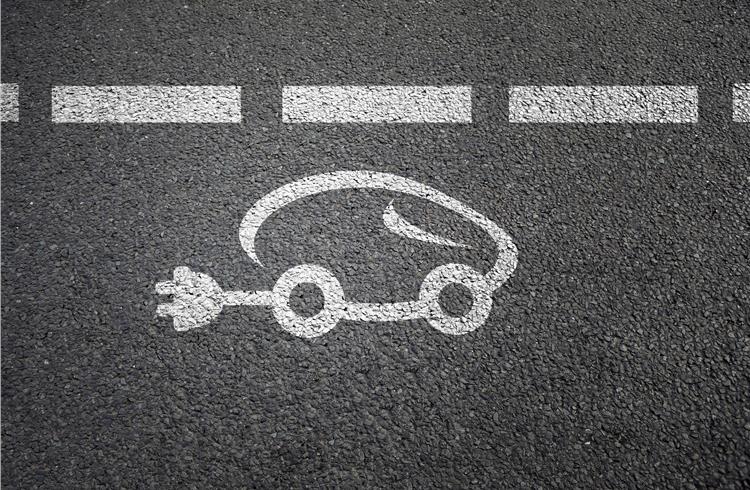'The government should consider a gradual adoption of EVs, thereby promoting electrification of powertrains, rather than an abrupt shift to only pure EVs.'
It would be logical to take one step at a time — we should encourage hybrid technologies also to coexist with pure-electric as it allows for the conventional industry to evolve with the new.
The automotive industry is in the wake of disruption and electro-mobility is here and now. It is important for all our stakeholders to accept the change and start working towards it. However, in the absence of a definite road map and policy guideline from the government, it is difficult to predict as to how soon it will be realised.
The automotive component industry has built a strong foundation and a robust manufacturing ecosystem. The Indian component sector, which today is a US$ 43.5 billion industry, has been ‘Making in India’ for the past three decades, which has enabled it to export parts worth US$ 11 billion to over 160 countries.
While ACMA has around 800 members and in reality 31 percent are into engine component manufacturing and another over 20 percent are in transmission components, there are over 8,000 companies (largely MSMEs in the unorganised sector) involved in component manufacturing and another 50,000 in retails and distribution of aftermarket components. The sector generates employment for over 30 lakh people, thus being one of the key economic drivers of the nation.
PAY HEED TO GROUND REALITY IN INDIA
The NITI Aayog vision document for the Indian automotive industry – ‘India Leaps Ahead – Transformative Mobility Solutions For All’ – is indeed a paradigm shift in the way we think about mobility and is driven by the need to significantly cut down CO2 emission by 37 percent and energy consumption to 64 percent by 2030.
However, since the automotive industry will be a nodal actor in the scheme of things, the reality on the ground will be different where very few Indian parts suppliers can respond to the EV promotion policy taken by the government of India. Considering technology and product development timelines, a large portion of EV parts would be imported, which may result in an inverted situation, quite inverse to the ‘Make in India’ policy. Even as per the government’s best estimates, by 2030 EV penetration would be limited. For instance, the NITI Aayog Report suggests that by 2032, in a best-case scenario, the EV sales penetration in passenger vehicles can be targeted at 40 percent, while different global reports suggest that EV sales penetration in India could reach around 10-15 percent by 2032.
Considering both scenarios, the industry is still left with 60~85 percent ICEs. This left-out space of ICEs (Internal Combustion Engines) can be targeted through hybrid-electric vehicles. This will further the government’s objective of reducing oil import and CO2 emissions as hybrid- electric vehicles are more efficient compared to conventional ICEs. In addition, as the manufacturing ecosystem of electric and hybrid- vehicles is similar, government support to hybrid-electric vehicles (HEVs) will catalyse domestic component manufacturing for EVs too. Also, India would be able to achieve near-complete electrification of mobility with less disruption and true Make in India.
There are examples of reconsiderations in certain countries (like Germany) where governments have changed their stance from abrupt to gradual shift, considering societal aspects like job losses and industry growth. So while the e-mobility target is a bit ambitious, it needs to be realistic as well.
Having said that, speaking from the perspective of the auto component industry, as we embark on a new journey, it is a reality today that we have a very vibrant and flourishing IC engine powertrain industry. The auto component sector directly employs close to 15 lakh people and total employment (direct and indirect) by auto component members would be close to 30 lakh. Hence, the EV-alone strategy push threatens job losses for these 15 lakh people employed currently in the component sector. Taking in a considerate view, it is vital that we must ensure that ushering in of new technologies should not be so disruptive and ad-hoc that they wipe out the entire industry. Auto component suppliers would be very happy to invest in EV-related parts, if they sincerely believe sufficient EV volumes are necessary to invite significant investments. Therefore, in my opinion, it would be logical to take one step at a time – we should encourage hybrid technologies also to coexist with pure-electric as it allows for the conventional industry to evolve with the new.
ELECTRIFIED VEHICLES RATHER THAN PURE EVs
While ACMA wholeheartedly supports the government’s vision of introducing e-mobility to address the challenge of pollution and our overdependence on fossil fuels, it should be noted that governments across the world are talking about electrification of vehicles but in this shift they are considering HEVs, PHEVs and BEVs as a basket of technologies, factoring key aspects such as consumer acceptance, cost viability, charging infrastructure and the manufacturing ecosystem.
Further, in light of the fact that 50 percent of the auto component industry’s revenue comes from IC engines – powertrain, we have requested the government to consider a gradual adoption of EVs, thereby promoting electrification of powertrains, rather than an abrupt shift to only pure EVs. With such an approach, the end objective of EV deployment can be achieved in a gradual manner without impacting jobs, investments and growth of
the industry.
Today, very few parts and materials of lithium ion batteries or motors are procurable in India. Moreover, very few component makers have the capability to produce EV components and development of such competency in others would take years to achieve. Until such time, EV components would continue to be imported by the OEs to meet the requirement.
There is clearly a cost disadvantage for BEVs and hence volume will remain limited in the medium term. I also urge the government to allocate significant funding towards indigenous R&D for creation of standard battery, motors and other components of powertrain ensuring creation of local IP.
Apart from the above, the auto industry in India is facing a slew of new regulations on the front of safety, emissions and environment including that of graduating from BS IV to BS VI. For this, auto component suppliers are making significant investments in BS VI technologies to be implemented in April 2020. Such investments are amortised over a period of at least 10 years to get a reasonable rate of return. And, I must say, industry is embracing very aggressively the transformation to BS-VI, which is commendable.
In order to achieve an electric mobility ecosystem, we urge the government to encourage the component industry with supportive policies (land, financing, capability development, R&D tax benefit) so that manufacturers can set up facilities for electrification of vehicles and carry out R&D in this area. To further encourage local manufacturing, it should be ensured that parts and components of EVs attract import duty at par with existing auto components – at 10 percent.
This column is part of Autocar Professional's 13th Anniversary Issue, December 15-2017
RELATED ARTICLES
'ADAS' crux lies in its proactive approach to safety enhancement': TaMo's Mohan Savarkar
Savarkar writes about the role of Active Safety Technology and ADAS in Compact Cars in augmenting inclusive vehicle safe...
Maintenance 101 for your electric two-wheeler, a cheat sheet for a breezy ownership experience
The experience of owning electric bikes is new, and remaining informed, aware and proactive will help in becoming better...
How technology can advance traffic enforcement for safer roads
By ensuring that only qualified drivers occupy the roads, authorities can substantially reduce the risk of accidents ste...





 16 Jan 2018
16 Jan 2018
 5918 Views
5918 Views





 Autocar Pro News Desk
Autocar Pro News Desk




